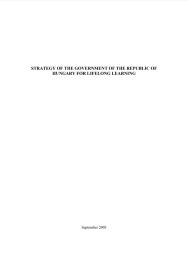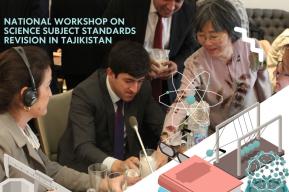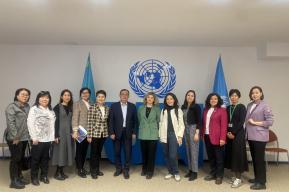Article
Hungary: Strategy of the Government of the Republic of Hungary for Lifelong Learning, issued in 2005

Rationale of the strategy
In formulating the strategy for lifelong learning, the Hungarian Government seeks to determine the long-term course of human resources development in compliance with European Union planning. The strategy’s main objective is to determine the action and support guidelines for catching up with the European Community and the developed countries; improving economic competitiveness and conditions for sustainable development; enhancing education and training conditions; achieving a more intensive labour market and social integration of the most disadvantaged groups; achieving more progressive institutional, asset and methodology development in education and training; and promoting physical as well as virtual access to learning opportunities for all citizens by enhancing the efficiency of the financing system.
Concept of lifelong learning
Lifelong learning encompasses the entire life cycle of the individual. Every person should be made interested in and capable of learning. The system of lifelong learning promotes alternative chances for early school-leavers. Learning has diverse objectives and the temporal and spatial extension of learning blurs the border between knowledge accumulated in school and knowledge acquired in the course of leisure activities. In order to make learning a real and available option for the individual in any stage of life, it is essential to follow a holistic approach and interpret lifelong learning as a single system.
Main challenges
The main challenges include:
- Competitiveness or social cohesion: conditions for the development of an innovative environment where people are willing to learn vary greatly within the country
- Ageing population: problems of labour force replacement
- Low representation of disadvantaged groups in the labour market
- Higher education and human resources: low rate of higher education qualifications in the working-age population; low proportion of academic degrees in science and engineering; low rate of participation in adult education
- Internet-based communication technologies have not yet become an integral part of everyday life for many people
- School reproduces, rather than compensates for, sociocultural disadvantages stemming from social inequalities
- Vocational education: structure of training has not changed in line with labour market demands
- Management of education and training: practically no cooperation and division of labour between the institutions, or where it does exist, it is along fragmented institutional interests
Main targets and measures
The strategy refers to all levels of the education system from early and pre-school education to retirement age. The following areas of intervention are identified:
- Development of basic skills and key competences in public education: improving the standards of school preparation; transforming secondary education
- Creating a diverse and abundant supply in vocational education, higher education and adult learning: modernization of the institutional network of training; implementation of the Bologna Process; development of formal adult education in higher education institutions
- Ever-extending learning opportunities: use of information and communication technologies; enhancing learning in the workplace; developing distance learning
- Career guidance, counselling and monitoring: establishing a nationwide information and counselling system; measuring the success of school-leavers in the labour market and feeding the results back to training institutions
- Recognition of informal and non-formal learning: joining the Europass system; building a single system of validation
- Supporting disadvantaged groups and groups at risk in the labour market: preventing early school-leaving; rethinking social assistance; creating an environment that encourages the combination of learning and work
- Establishment of a new teaching and learning culture: enhancing teachers’ capacity for self-reflection; providing teacher training; building a national assessment and evaluation system in public education
Particular feature of the strategy
The focal point of the strategy of lifelong learning also incorporates disadvantaged groups and groups at risk in the labour market. Learning opportunities are unevenly distributed among different social groups. Disadvantaged groups include Roma, disabled people, those with low-level qualifications or without a marketable vocational qualification, early school-leavers, prisoners and ex-prisoners, residents of underprivileged areas and homeless people. Migrants, women and older people also face disadvantages in participating in education. The following areas of intervention are proposed in order to counteract inequalities in the education system: preventing early school leaving; developing programmes for vocational schools; promoting integrated education; levelling out regional differences in education and training; rethinking social assistance and creating an environment that facilitates learning and work; disseminating part-time employment solutions; devising an individual training programme for women on maternity or childcare leave; improving the qualifications of the working-age population; rethinking the support system for adult education.
Relevant documents that the strategy refers to
- Hungary. Informatics Government Committee. 2001. National Information Society Strategy, NITS
- Hungary. Ministry of Education. 2004. Medium-term Development Strategy for Public Education
- Hungary. Ministry of Education and Culture. 2004. Hungarian Universitas Programme
- Government of the Republic of Hungary. 2004. National Action Plan for Employment
- National Action Plan for Social Cohesion
- Government of the Republic of Hungary. 2004. Convergence Programme 2004-2008
- Government of the Republic of Hungary. 2010. National Development Plan (2004–2006)
- Government of the Republic of Hungary. 2010. Human Resources Development Operational Programme
- Government of the Republic of Hungary. 2010. Regional Development Operational Programme
- Government of the Republic of Hungary. 2010. Economic Competitiveness Operational Programme
Stakeholders involved in the development of the strategy
Further readings and web links
Issuing Body
Ministry of Education










